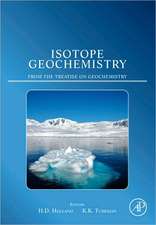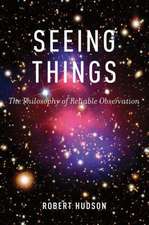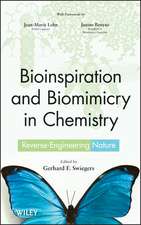Reaction Engineering Principles
Autor Himadri Roy Ghataken Limba Engleză Hardback – 5 apr 2016
The textbook begins by covering the basic building blocks of the subject—stoichiometry, kinetics, and thermodynamics—ensuring students gain a good grasp of the essential concepts before venturing into the world of reactors.
The design and performance evaluation of reactors are conveniently grouped into chapters based on an increasing degree of difficulty. Accordingly, isothermal reactors—batch and ideal flow types—are addressed first, followed by non-isothermal reactor operation, non-ideal flow in reactors, and some special reactor types.
For better comprehension, detailed derivations are provided for all important mathematical equations. Narrative of the physical context in which the formulae work adds to the clarity of thought. The use of mathematical formulae is elaborated upon in the form of problem solving steps followed by worked examples. Effects of parameters, changing trends, and comparisons between different situations are presented graphically. Self-practice exercises are included at the end of each chapter.
Preț: 891.40 lei
Preț vechi: 1087.07 lei
-18% Nou
Puncte Express: 1337
Preț estimativ în valută:
170.59€ • 185.24$ • 143.30£
170.59€ • 185.24$ • 143.30£
Carte tipărită la comandă
Livrare economică 22 aprilie-06 mai
Preluare comenzi: 021 569.72.76
Specificații
ISBN-13: 9781498758567
ISBN-10: 1498758568
Pagini: 408
Ilustrații: 72 black & white illustrations, 27 black & white tables
Dimensiuni: 156 x 234 x 29 mm
Greutate: 0.45 kg
Ediția:1
Editura: CRC Press
Colecția CRC Press
ISBN-10: 1498758568
Pagini: 408
Ilustrații: 72 black & white illustrations, 27 black & white tables
Dimensiuni: 156 x 234 x 29 mm
Greutate: 0.45 kg
Ediția:1
Editura: CRC Press
Colecția CRC Press
Cuprins
Introduction. Stoichiometry. Chemical Kinetics. Thermodynamics of Chemical Reaction. Ideal Isothermal Batch Reactor. Ideal Isothermal Flow Reactors. Nonisothermal Reactors. Nonideal Flow in Reactors. Reactors of Special Types. Appendices.
Notă biografică
Himadri Roy Ghatak earned his BE and ME degrees from the erstwhile University of Roorkee (now Indian Institute of Technology Roorkee) and his PhD from Sant Longowal Institute of Engineering and Technology. He worked in the industry from 1991 to 1995 before joining the faculty of Sant Longowal Institute of Engineering and Technology, where he rose to the position of a professor in chemical engineering. He also served as the head of the Department of Chemical Engineering, and associate dean (research and consultancy). He has taught courses in chemical reaction engineering, mass transfer, environmental engineering, and energy technology. Professor Ghatak’s research focuses on electrochemical advanced oxidation, hydrogen production, and lignin.
Recenzii
"… comprehensive and covers topics required for undergraduate and graduate students. … The topics are well organized and distributed systematically."
—Nayef Ghasem, United Arab Emirates University, Al Ain
"Elaborate details of the physical phenomenon and models are given before the ideas are translated into equations and formulae. … Detailed derivations have been provided … including intermediate steps which make mathematical aspects more comprehensible and less intimidating."
—Pramod K. Bajpai, Thapar University, Patiala, India
—Nayef Ghasem, United Arab Emirates University, Al Ain
"Elaborate details of the physical phenomenon and models are given before the ideas are translated into equations and formulae. … Detailed derivations have been provided … including intermediate steps which make mathematical aspects more comprehensible and less intimidating."
—Pramod K. Bajpai, Thapar University, Patiala, India
Descriere
This textbook begins by covering the basic building blocks of chemical reaction engineering—stoichiometry, kinetics, and thermodynamics—before venturing into the world of reactors. The design and performance evaluation of reactors are conveniently grouped into chapters based on an increasing degree of difficulty. Accordingly, isothermal reactors—batch and ideal flow types—are addressed first, followed by non-isothermal reactor operation, non-ideal flow in reactors, and some special reactor types. For better comprehension, detailed derivations, problem solving steps, worked examples, graphics, and practice exercises are included.








